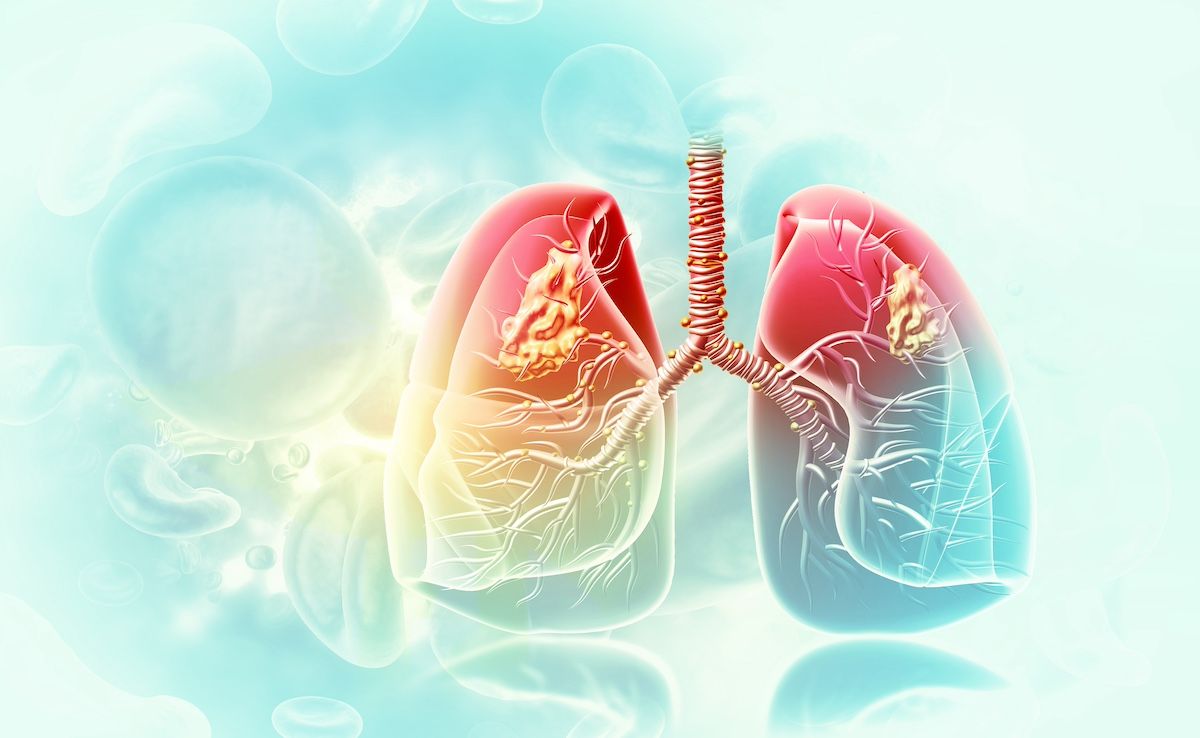News
Article
Tailored Management Needed for Male Patients With NSCLC After Surgery
Author(s):
Key Takeaways
- Male NSCLC patients had higher complication rates, longer hospital stays, and increased costs compared to female patients.
- Factors like age, BMI, COPD, and smoking history were associated with worse outcomes in male patients.
Lung cancer is the top cause of cancer-related death worldwide.
Demonstrated differences in outcomes between female and male patients in the perioperative setting for non–small cell lung cancer (NSCLC) have experts calling for more refined patient management strategies for male patients due to the worse outcomes seen among them in a new retrospective analysis.
The investigators behind this study noted in Translational Lung Cancer Research the crucial importance of recognizing and understanding the differences between male and female patients for accurately managing cancer treatment,1 especially in light of knowing that lung cancer remains the top cause of cancer-related death worldwide.2 Findings from previous research in this area are mixed, showing lower rates of postoperative complications and reduced in-hospital mortality among female patients3 but that propensity score matching mediates this difference.4
Their study background encompassed adult patients (5738 female patients and 4443 male patients) undergoing surgery for their NSCLC between January 2014 and April 2021 who had data in the Western China Lung Cancer Database.1
Patient Population
The female patients in this analysis were slightly younger than the male patients, at a mean (SD) age of 55.76 (10.95) years vs 58.71 (10.78) years, and had lower mean BMI, at 22.67 (2.99) kg/m2 vs 23.78 (2.90) kg/m2 (both P < .001). An overwhelming majority of the female patients had never smoked (97.5%) vs more than half of the male patients who had a smoking history (50.8%) (P < .001).
Of the 10 complications compared in this analysis, only rates of pulmonary embolism, surgical site infection, and urinary tract infection were lower among the male patients. | Image Credit: © Crystal light - stock.adobe.com

They also had lower rates of hypertension (16.89% vs 21.31%; P < .001), coronary artery disease (1.39% vs 2.63% P < .001), diabetes (5.28% vs 9.30% P < .001), chronic obstructive pulmonary disease (COPD; 1.03% vs 6.10% P < .001), tuberculosis (0.31% vs 0.32% P > .99), and neoadjuvant treatment (preoperative chemotherapy and radiotherapy) for their NSCLC (0.51% vs 2.21% P < .001); their mean tumor size was 1.79 (1.15) cm vs 2.51 (1.60) among the male patients (P < .001); fewer presented with advanced-stage disease (stage III, 5.80 vs 15.55%; stage IV, 0.09% vs 0.29%; P < .001); surgical duration was 15% shorter (108.43 [43.23] vs 127.78 [55.80] min; P < .001); and fewer underwent video-assisted thoracoscopic surgery (VATS; 97.25% vs 90.37%; P < .001). Adenocarcinoma was the most common histology among both cohorts (female patients, 95.12%; male patients, 74.77%).
Analysis Results
Of the 10 perioperative-outcome–related complications that were compared between the patients in this study, the rates were higher among the male patients for most (7 of 10), excepting pulmonary embolism, surgical site infection, and urinary tract infection:
- Prolonged air leak: 3.08% vs 7.58%
- Pulmonary infection: 0.87% vs 2.66%
- Chylothorax: 0.70% vs 1.35%
- Atelectasis: 0.12% vs 0.32%
- Respiratory failure: 0.10% vs 0.38%
- Arrhythmia: 0.07% vs 0.18%
- Gastrointestinal complications: 0.03% vs 0.29%
- Pulmonary embolism: 0.10% vs 0.09%
- Surgical site infection: 0.05% vs 0.05%
- Urinary tract infection: 0.05% vs 0.05%
Overall hospitalization costs also were lower among the female patients, at CNY50,713.69 (US$7014.05) vs CNY54,580.8 (US$7548.90).
Through multivariate regression, among male patients, the investigators found independent associations between the higher numbers of complications and longer postoperative hospital stays, drainage volume in the first 3 days, and hospitalization cost, as well as between age, body mass index, COPD, VATS, and resection extent with total complications, postoperative hospital stays, and hospitalization cost (all P < .001).
Male sex was also shown to be an independent risk factor for longer hospital stays and increased hospitalization costs at various stages of NSCLC (stage I through stage III), among those who had a smoking history, and according to year of surgery (2014-2015 vs 2016-2021) (P < .001).
Further, COPD, smoking history, and VATS were risk factors for incidence of complications among male patients only (P < .001).
“Sex differences in perioperative outcomes could be partly explained by clinicopathologic differences between female and male NSCLC patients,” the authors concluded. “Our findings underscored sex when tailoring management strategies. Minimizing the negative impact of inferior clinicopathological status might help to reduce or eliminate sex differences in perioperative outcomes of NSCLC patients.”
References
1. Zheng Q, Zhou J, Zhang Y, et al. Insights into sex differences in perioperative outcomes of non-small cell lung cancer patients. Transl Lung Cancer Res. 2024;13(10):2549-2560. doi:10.21037/tlcr-24-336
2. Bray F, Laversanne M, Sung H, et al. Global cancer statistics 2022: GLOBOCAN estimates of incidence and mortality worldwide for 36 cancers in 185 countries. CA Cancer J Clin. 2024;74(3):229-263. doi:10.3322/caac.21834
3. Tong BC, Kosinski AS, Burfeind WR Jr, et al. Sex differences in early outcomes after lung cancer resection: analysis of the Society of Thoracic Surgeons General Thoracic Database. J Thorac Cardiovasc Surg. 2014;148(1):13-18. doi:10.1016/j.jtcvs.2014.03.012
4. Nelson DB, Lapid DJ, Mitchell KG, et al. Perioperative outcomes for stage I non-small cell lung cancer: differences between men and women. Ann Thorac Surg. 2018;106(5):1499-1503. doi:10.1016/j.athoracsur.2018.06.070




